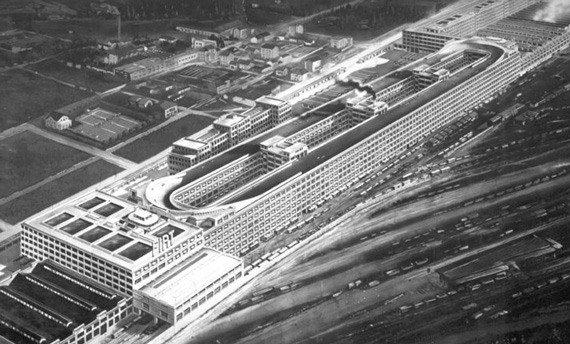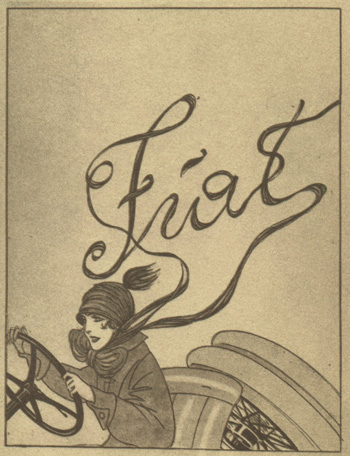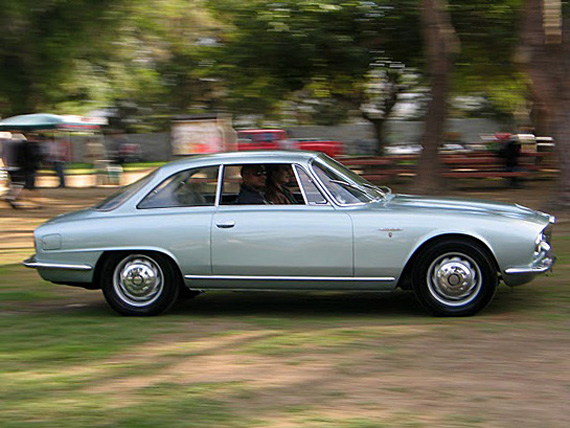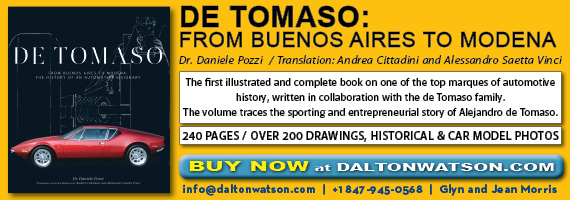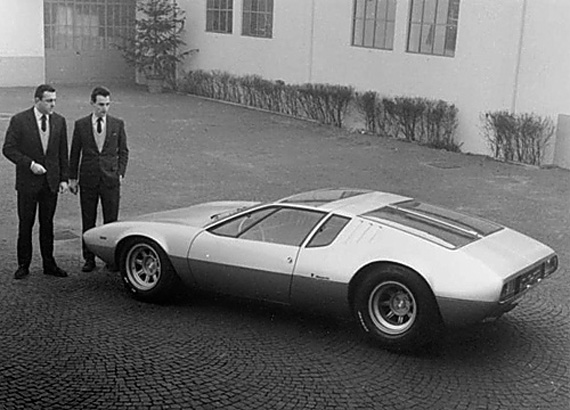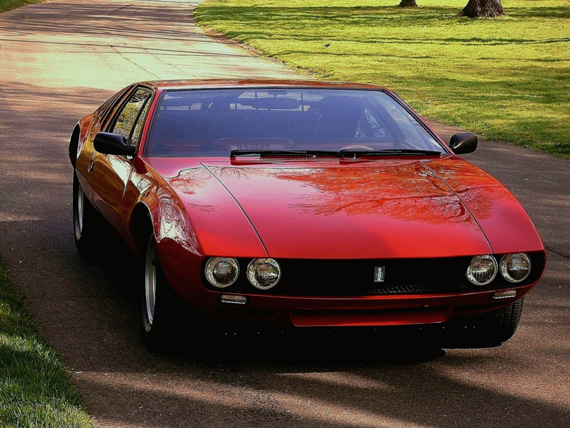
I have written this article for the art and design enthusiast. As a car designer, I will explain the look of the Mangusta and how it is inexplicably tied to its function. My observations are based on my professional career experiences as an automobile designer for over forty years as well as my experiences with my own Mangusta 8MA-670, seen here. Photo Dick Ruzzin
Introduction
Much has been written about Alessandro deTomaso and his automotive trials and successes, including racing and production cars. One of those cars is the Mangusta, a car designed singularly by Giorgetto Giugiaro who did the prototype and the production version, interior and exterior.
I have written a small book using my design experience to give insight into the Mangusta design and why it is so special. Pete Vack and VeloceToday have graciously offered to present part of it on their site in three parts. Below is Part 1. My goal is to present the book at the fiftieth anniversary of the Mangusta at Concourso Italiano in 2016.
Dick Ruzzin, General Motors Design Staff, retired.
Turin, Italy
A beautiful and historic industrial city, Turin’s Centro Citta, is graced with large piazzas and surrounding arcades that provide cool shade on hot summer days. Nevertheless, Turin is Italy’s Detroit, but with a difference: Early in the development of the Italian motor industry historic metal working skills were applied to the creation of farm machinery and then horse drawn carriages, then automobiles. All were built with an additive that was lacking in abundance in much of the rest of the automotive world; an appreciation and use of the arts.
Giovanni Agnelli’s Fiat, established in 1899, put Turin on the map but and as Fiat grew, so did Turin; the population increased from 329,691 in 1901 to over one million by 1961. Lancia was also established in Turin in 1906. Both firms were supported by Turin’s “carrozzerias”, coach building companies whose main mission was to design beautiful bodies for Italian automobile manufacturers. In 1978, a book entitled “La Carrozzeria Italiana” updated a list of known Italian coachbuilders, dates of business and location. Out of 190 listed, 72, or 38 %, were based in Turin. And it was not only the numbers that are impressive but the coachbuilders themselves which included Allemano, Bertone, Boano, Farina, Ghia, Italdesign, Motto, O.S.I., Pininfarina, Vignale and Viotti.
After WWII, European companies and then Asian manufacturers started to come to Turin for auto design. Italian automobile design became a global force just as the Italian fashion design industry had in Milan located a short distance away.
It was this setting, in the mid-1960s, that inspired a young designer as he considered his future and his own skills and achievements as a designer.
The Mangusta’s Designer
When an artist sits down to do his work, all of his lifetime experiences and values come to bear on what he is trying to create. This is inevitable and cannot be prevented as art is a reflection of the essence of the artist’s intellect in the form of sculpture, music, painting, or car design. The design of the Mangusta was done by one artist who was also bound these conventions, Giorgetto Giugiaro.
Born 60 miles south of Turin in a small community of Garressio, Giugiaro’s grandfather Luigi Giuseppe painted frescoes, as did father Mario. 1 But Mario decided that the next generation should take technical classes to augment the art. Giorgetto moved to Turin at the age of 15 to attend the Academy of Fine Art, where his teacher was Eugenio Colmo, aka “ Golia”. Colmo had done art for Fiat as early as 1919. In late 1956, Colmo had an exhibition with Giugiaro’s sketches cars which was attended by Fiat Chief Engineer Dante Giacosa. This in turn led to a position with Fiat. “Thus was born my career in car design; I was seventeen.” 2
1919 Fiat poster by Giugiaro’s teacher, Eugenio Colmo who painted as “Goila”.
But Fiat was too constraining for the young designer and in 1959, a friend of his arranged a meeting with Nuccio Bertone at the Turin Auto Show. 3 This began a very fruitful relationship with the coachbuilder. In fact, Giugiaro succeeded immediately, scoring his first design with the Alfa 2000/2600 coupe.
Bertone took young Giugiaro under his wing and gave him design opportunities that in turn benefited the company greatly. As Giugiaro’s talent grew in experience under the masterful hand of Bertone, he created many beautiful car designs. As the number of design successes grew, Bertone became so appreciative that he publicly credited Giugiaro for his design work. This was very unusual within the Italian auto design profession, for that time designs were always credited only to the company that the designer worked for.
In 1993, while I was working for General Motors in Europe, Bertone told me that after many successes he eventually became worried that Giugiaro would leave the company. Therefore he gave him the responsibility of all design fabrication in addition to those he already had as Chief Designer for Stile Bertone. Despite this, Giugiaro eventually left Bertone and went to Carrozzeria Ghia SpA, where he had a brief career before leaving to do freelance design work and establish his own company.
After leaving the Italian coach building company Ghia he found himself alone without direction or suggestions from others. He was already at that time an experienced professional perfectly capable of developing everything required to complete a car design.
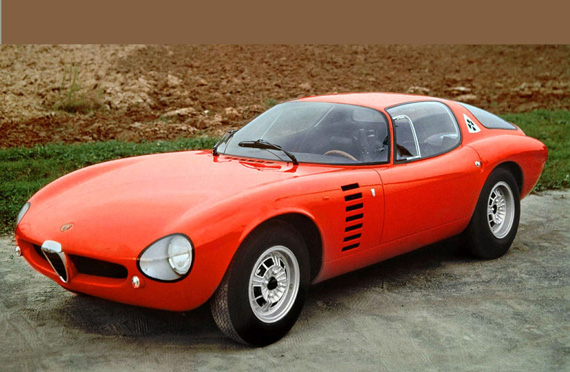
Completely round in its form language, the Canguro is the literal opposite of the Mangusta in its basic theme, shape, and architecture. Photo Alfa Romeo
Giugiaro revealed that when he left Bertone he felt that he should not “take anything.” What he meant as a designer was that he had decided to go forward and design in a new way that would not build off the work that he had done for Bertone because he no longer was part of that company. Leaving all of his current intellectual design tools behind, Giugiaro stepped forward to create and develop a new artistic design culture, a new “design expression” that would soon be recognized and emulated around the world. As an artist and designer he made a sharp break away from the rounded Bertone design culture (as exemplified by the Alfa Romeo Canguro) that he had evolved while working there, moving in one bold step to a new sheer form language that depended much more on simplicity, subtle execution and proportion for success.
After leaving Ghia and now free-lancing, Giugiaro sketched a daring mid-engine sports car which created a great deal of enthusiasm at Ghia who in turn became his first client. In the early 1990s, I was told by Luciano Ambrosio who worked at Stile Bertone, that that Giugiaro’s design was done at home on his kitchen table.
At Ghia, the kitchen drawing was translated into a full size model. Alessandro de Tomaso was in the process of gaining controlling interest in Ghia and soon Giugiaro’s mid-engine design would become the Ghia Mangusta. De Tomaso quickly blended a racing chassis from one of his earlier projects (the P70 with a body designed by Peter Brock) with Giugiaro’s mid-engine design and took it to the Turin Auto Show in the fall of 1966. Thanks in good measure to Giugiaro’s design, de Tomaso had arrived as a creator and builder of automobiles and Giugaro was able to successfully launch Italdesign.
In Europe and especially within the Italian motor industry, Giugiaro was seen as an exceptional design talent and he soon teamed up with the very experienced and respected automotive engineer Aldo Mantovani. Italdesign was on its way to greatness, one of the first major clients being Volkswagen of Germany.
The early skill and sensitivity seen in the Mangusta design, singularly created by Giugiaro, was a clear prediction of what he would accomplish as an automotive designer in the future over a long period of many years. Giorgetto Giugiaro was declared Designer of the Century by members of the international automotive press in 1999.
The Turin Motor Show in Italy, 1966
The first mockup of the car that would become Alessandro de Tomaso’s Mangusta was shown in Turin at the Motor Show in the fall of 1966. Along with the Ghia Mangusta, the Maserati Ghibli (both Giugiaro designs), was also shown by Ghia.
The Mangusta was seen as an exceptionally beautiful and functionally unique GT car. That view was shared by most everyone who has ever seen one, time has only verified and justified that opinion. The car is beautiful, small, very low, and delightful to look at as well as great fun to drive and ride in. It feels like a go-cart when driving in the curves because its passengers sit so low to the ground. It is very much like riding in a race car.
One key design feature that is embodied in the Mangusta is only found after you finally get past its emotional aesthetic beauty—the subtle evidence everywhere that it was built by real people—actually Italian artisans. This human aesthetic content is in strong contrast to today’s cars that exhibit an almost surreal quality of mechanical and physical visual perfection. Everywhere you look, the Italian aesthetic culture is very evident in the Mangusta. Everything is done with artistic content, whether the beautiful and simple front hood surfaces or the smoothly crafted cast aluminum rear hub carriers.
And as we’ll see in Part 2, the Mangusta was designed with Alessandro deTomaso’s vision of a race car for the street but Giorgetto Giugiaro made it into a rolling design icon.
Notes
1 Automobile Quarterly VX1 3 1973 interview with Don Vorderman
2 October 2013 interview with Universal pictures Italia facebook notes
3 Interview by Sergio Piccione in 2009 http://www.elmundo.es/elmundomotor/2009/11/11/empresa/1257927625.html
